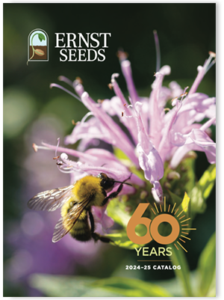Pheasants and bobwhite quail have become iconic symbols of the American grassland and prairie restoration movement.
For upland game bird hunters, they represent satisfying days afield with a loyal bird dog. The frenetic rush of cackling and wing beats on the flush. For others, these birds are indicators of healthy, biodiverse prairies and grasslands. Their absence from historically bird-rich regions mean we have habitat work to do.

There are four key quail and pheasant habitat types that are critical for establishing and maintaining a healthy population of these hardy upland game birds on your property. Without any one of these habitat offerings, your chances of success diminish in proportion.
Nesting Habitat
Quail and pheasant hens need a safe environment in which to incubate, fledge and rear their chicks. A canopy of vegetative cover overhead will help camouflage the nest from birds of prey.

Nesting in bunch grasses is preferable to those that form a dense network of stems. Grass bunches leave corridors of open ground in the understory that make escape from predators easier. Examples of optimal native grasses for this purpose include Indiangrass (Sorghastrum nutans), big bluestem (Andropogon gerardii), little bluestem (Schizachyrium scoparium), blunt broom sedge (Carex scoparia), side oats grama (Bouteloua curtipendula) and Virginia wildrye (Elymus virginicus). These native bunch grasses have the clump stem structure in which pheasants and quail prefer to make their nests, while allowing relative ease of escape from predators. Habitat that additionally features native forbs (flowering plants) is also a good idea, bringing the additional benefit of attracting pollinators like monarch butterflies, native bees, and honeybees, as well as other non-game grassland birds.
Brood-rearing Habitat
Within minutes of birth, quail and pheasant chicks will leave the nest and begin their first search for food – typically in the form of small bugs, worms and insect larvae. Having host plants to provide these feeding options is critical to their survival from the outset.

Like nesting habitat, rearing habitat should include easy travel in the understory without an overabundance of plant stems to restrict chicks’ mobility. This is especially important, considering their inability to fly until about the second week of life. This is where a mix of native cool season bunch grasses with abundant broad-leafed forbs is an ideal option. It’s best to have fewer clumps of grasses and more open ground with well-spaced forbs intermingled. Grasses like those used for nesting habitat are good choices. Examples of forbs to be incorporated in with them include partridge pea (Chamaecrista fasciculata), wild senna (Senna hebecarpa), lanceleaf coreopsis (Coreopsis lanceolata), narrowleaf mountainmint (Pycnanthemum tenuifolium), wild bergamot (Monarda fistulosa), hairy beardtongue (Penstemon hirsutis) and other insect and larvae attracting plants. Disturbed areas from discing, prescribed fire and even managed grazing can be good quail and pheasant brood rearing habitat, offering chicks ease of travel, with a canopy of overhead cover and plenty of bugs and larvae on which to feed.

Mixes like Ernst Seeds’ Showy Northeast Native Wildflower and Grass mix feature a diverse mix of numerous native forbs that provide blooms throughout the growing season for the benefit of butterflies, native bees, honeybees and other pollinators, in conjunction with bunch grasses for nesting and opening of the ground underneath the canopy.
Winter Habitat
Pheasants and quail don’t migrate. You can expect them to overwinter on your site if given adequate access to crucial winter cover and nearby food sources that provide nourishment during these harsh months, while allowing nearby security from predation and the ravages of snow and extremely cold.

Unmowed switchgrass (Panicum virgatum) is a go-to native warm season grass for this purpose, with its strong stalks and height. While it might eventually fall under snow load, it will typically not fall flat – allowing for an insulated shell of cover under the snow mantle, and recovering after the snow melts. The addition of other warm season grasses can enhance this application. Fence rows and border thickets of deciduous shrubs and shrub-like trees typical of early successional young forests are also utilized heavily by pheasants and quail at this time of year. Plantings adjacent to these areas have a distinct advantage in offering a safe and warm environment for winter survival.
Food Plots
A comprehensive habitat plan is incomplete without ensuring that quail and pheasant food plot mixes are planted adjacent to these other habitats.

Corn and grain sorghum are two good sources of nutrition and have the added ability to withstand fairly heavy snow loads in winter – a distinct advantage for snow-bound birds. Other grain crops like rye, buckwheat, millets and even wheat are also good options, though they may lack the stamina for withstanding very heavy snow events typical of northern winters.
Many of the beneficial species of grasses and forbs for quail and pheasant habitat are part of common CRP (Conservation Reserve Program) plantings, however these CRP plantings should be managed by fire, discing or grazing, as allowed by CRP rules, to create the best quality habitat. It’s always a good idea to consult with your local USDA-NRCS office, conservation district and/or conservation/habitat organization(s). They can help you capitalize on opportunities to develop valuable upland game bird, pollinator and wildlife habitat, while helping to achieve national conservation goals and derive income from otherwise marginal grounds.
For help in identifying specific native plant seeds and quail and pheasant habitat seed mixes, you can use Ernst Conservation Seeds’ Seed Finder Tool, or visit the Wildlife Habitat & Food Plots or Pollinator Favorites product categories. The customer service team can also help you determine the best native seed mix for your project. Call them at 800-873-3321 or email sales@ernstseed.com.


